
Ettore Majorana Foundation and Centre for Scientific Culture
President: Professor Antonino Zichichi
INTERNATIONAL SCHOOL of CRYSTALLOGRAPHY
Director: Sir Tom Blundell, FRS FMedSci

49th Course
High-pressure crystallography:
status artis and emerging opportunities
a NATO Advanced Study Institute
Erice, Italy • 27 May (arrival) to 5 June (departure) 2016
Purpose of the course
 New experimental and theoretical approaches in the field of high pressure crystallography allow us to address fundamental scientific questions in disciplines such as Physics, Chemistry, Biology, Geosciences and Materials Science. High pressure - from the very modest pressure required to induce the denaturation of proteins and modify intermolecular interactions, through the higher pressures required to synthesise new materials for technological application, to the ultra-high pressures required to radically alter the chemical physical properties of simple elements and materials or recreate the conditions found in Earth's and other planets' interior - is making it a versatile and central tool in condensed matter science.
New experimental and theoretical approaches in the field of high pressure crystallography allow us to address fundamental scientific questions in disciplines such as Physics, Chemistry, Biology, Geosciences and Materials Science. High pressure - from the very modest pressure required to induce the denaturation of proteins and modify intermolecular interactions, through the higher pressures required to synthesise new materials for technological application, to the ultra-high pressures required to radically alter the chemical physical properties of simple elements and materials or recreate the conditions found in Earth's and other planets' interior - is making it a versatile and central tool in condensed matter science.
Fundamental topics covered in the course include experimental techniques for pressure generation, X-ray and neutron diffraction on single crystal and powder materials, comparative structural studies and combined high-temperature and low-temperature experiments. These will be demonstrated through examples of different chemical and structural complexity, from minerals to ices and biomolecules. Specialized and frontiers high-pressure research topics will include computational crystallography, dynamic compression, characterization of liquids and glasses and pair distribution function analysis. The course will be rounded up by illustrating the use of high-pressure as a means to study and access new materials for industrial application such as pharmaceuticals, energy storage, magnetic and ultra-hard materials.
Lectures will be complemented by demonstration and workshop sessions. The course will provide a platform for young and senior scientists to interact and identify as well as discuss new challenges in this rapidly evolving and vibrant research area.


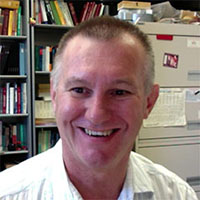
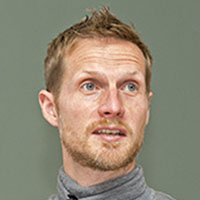











 The focus of my research for the past 30 years has been to determine the structure-property relationships of key industrial and geological materials to provide the basis for rationale materials design and understanding geological processes. The details of the arrangement of the atoms within a solid determine its physical, mechanical, thermodynamic, elastic and chemical properties. So, to determine how the properties of materials depend on their structures, I determine how their properties and structures change under high pressures.
In the past, I have developed and established novel methods for single-crystal X-ray diffraction at extreme conditions in order to characterize and understand the fundamental relationship between the atomic-scale structures and properties of materials. The software packages that I have developed for diffractometer control and processing of data are distributed freely from my web site,
The focus of my research for the past 30 years has been to determine the structure-property relationships of key industrial and geological materials to provide the basis for rationale materials design and understanding geological processes. The details of the arrangement of the atoms within a solid determine its physical, mechanical, thermodynamic, elastic and chemical properties. So, to determine how the properties of materials depend on their structures, I determine how their properties and structures change under high pressures.
In the past, I have developed and established novel methods for single-crystal X-ray diffraction at extreme conditions in order to characterize and understand the fundamental relationship between the atomic-scale structures and properties of materials. The software packages that I have developed for diffractometer control and processing of data are distributed freely from my web site, 
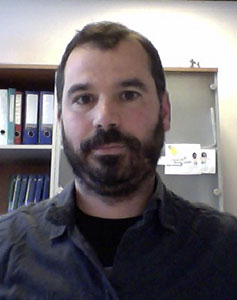 Daniele Antonangeli obtained his Laurea in Physics from the University of Roma Tre (Rome, Italy) in 2001 and his PhD in Physics and Chemistry of Materials from the University Pierre et Marie Curie – Paris 6 (Paris, France) in 2005. After a three-years appointment as Post Doctoral Research Staff Member at the Lawrence Livermore National Laboratory (Livermore, CA-USA), he joined IMPMC as CNRS research scientist in 2007.
Daniele’s activity mainly focused on the study of structural and dynamical properties of condensed matter under extreme thermodynamic conditions, often carrying out research at the frontier in between solid-state physics and Earth and planetary science. Large part of his research has been carried out at synchrotron facilities, mostly using inelastic x-ray scattering and x-ray diffraction techniques. He often actively participated in beamline developments in terms of advanced sample environment. He dedicated significant efforts in extending the application of inelastic x-ray scattering to high pressure (P) and high temperature (T) (P>100 GPa, T>1000 K).
His fields of interest include phonon dispersion, phonon scattering, sound wave propagation, elasticity, phase transition and transition mechanisms, melting and structure of liquids, electron-phonon coupling, elastic and thermal properties of Earth and planetary materials, Earth’s deep interior, Moon and telluric planetary interiors.
Daniele Antonangeli obtained his Laurea in Physics from the University of Roma Tre (Rome, Italy) in 2001 and his PhD in Physics and Chemistry of Materials from the University Pierre et Marie Curie – Paris 6 (Paris, France) in 2005. After a three-years appointment as Post Doctoral Research Staff Member at the Lawrence Livermore National Laboratory (Livermore, CA-USA), he joined IMPMC as CNRS research scientist in 2007.
Daniele’s activity mainly focused on the study of structural and dynamical properties of condensed matter under extreme thermodynamic conditions, often carrying out research at the frontier in between solid-state physics and Earth and planetary science. Large part of his research has been carried out at synchrotron facilities, mostly using inelastic x-ray scattering and x-ray diffraction techniques. He often actively participated in beamline developments in terms of advanced sample environment. He dedicated significant efforts in extending the application of inelastic x-ray scattering to high pressure (P) and high temperature (T) (P>100 GPa, T>1000 K).
His fields of interest include phonon dispersion, phonon scattering, sound wave propagation, elasticity, phase transition and transition mechanisms, melting and structure of liquids, electron-phonon coupling, elastic and thermal properties of Earth and planetary materials, Earth’s deep interior, Moon and telluric planetary interiors.

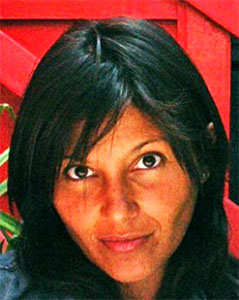 Livia Eleonora Bove (
Livia Eleonora Bove (
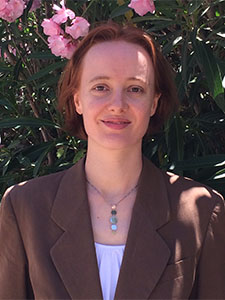 Francesca P. A. Fabbiani (
Francesca P. A. Fabbiani (
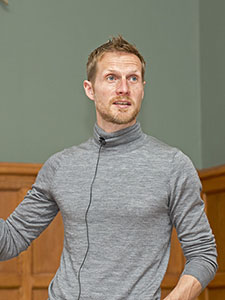 Malcolm Guthrie has been working in the field of high-pressure diffraction at major neutron and synchrotron facilities for almost 17 years. He has studied how the structure of matter responds to extremes pressure across multiple length scales and his interests span crystalline, liquid, amorphous and low-dimensional substances.
Malcolm Guthrie has been working in the field of high-pressure diffraction at major neutron and synchrotron facilities for almost 17 years. He has studied how the structure of matter responds to extremes pressure across multiple length scales and his interests span crystalline, liquid, amorphous and low-dimensional substances.
 Tetsuo IRIFUNE received BSc in geophysics at Kyoto Univ., MSc in mineral physics at Nagoya Univ., PhD in mineralogy and petrology at Hokkaido Univ., and spent a few years at the RSES of Australian National Univ. as a post-doctoral fellow.
Tetsuo IRIFUNE received BSc in geophysics at Kyoto Univ., MSc in mineral physics at Nagoya Univ., PhD in mineralogy and petrology at Hokkaido Univ., and spent a few years at the RSES of Australian National Univ. as a post-doctoral fellow.
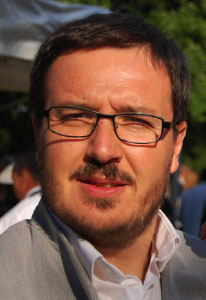 Denis Machon has completed his PhD at the age of 26 years from Grenoble INP and postdoctoral studies from University College of London. During these years, he worked on pressure-induced amorphisation and polyamorphism both on the experimental and theoretical aspects. He is now professor assistant at University Lyon 1. His research interests are centered on high-pressure physics, thermodynamics and phase transitions. His current research activities are dedicated to the understanding of the combined effects of pressure, size and interface in the phase stability.
He also teaches a course dedicated to scientific method and intellectual tools to build up one’s critical mind. Interested in Neurosciences, he develops some active educational methods.
Denis Machon has completed his PhD at the age of 26 years from Grenoble INP and postdoctoral studies from University College of London. During these years, he worked on pressure-induced amorphisation and polyamorphism both on the experimental and theoretical aspects. He is now professor assistant at University Lyon 1. His research interests are centered on high-pressure physics, thermodynamics and phase transitions. His current research activities are dedicated to the understanding of the combined effects of pressure, size and interface in the phase stability.
He also teaches a course dedicated to scientific method and intellectual tools to build up one’s critical mind. Interested in Neurosciences, he develops some active educational methods.

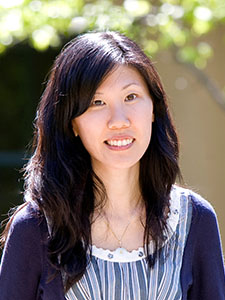 Wendy Mao eceived her Ph.D. in 2005 from the University of Chicago, and then spend two years as a J. R. Oppenheimer fellow at Los Alamos National Laboratory. She has been a faculty member with a joint appointment in Geological Sciences at Stanford University and Photon Science at SLAC National Accelerator Laboratory since 2007. Wendy’s research focuses on the behavior of materials under extreme conditions. She uses diamond anvil cells to compress samples to high pressures and studies the dramatic changes that are induced using a suite of laboratory and synchrotron radiation techniques. Her work has application to understanding Earth and planetary interiors and developing new energy-related materials.
Wendy Mao eceived her Ph.D. in 2005 from the University of Chicago, and then spend two years as a J. R. Oppenheimer fellow at Los Alamos National Laboratory. She has been a faculty member with a joint appointment in Geological Sciences at Stanford University and Photon Science at SLAC National Accelerator Laboratory since 2007. Wendy’s research focuses on the behavior of materials under extreme conditions. She uses diamond anvil cells to compress samples to high pressures and studies the dramatic changes that are induced using a suite of laboratory and synchrotron radiation techniques. Her work has application to understanding Earth and planetary interiors and developing new energy-related materials.

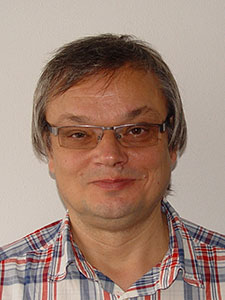 Roman Martonak obtained his PhD in Condensed Matter Theory at SISSA,
Trieste and afterwards worked at Johannes-Gutenberg University in
Mainz, Max-Planck Institute for Condensed Matter Research in Stuttgart
and ETH Zurich. He is now professor of Physics at the Faculty of
Mathematics, Physics and Informatics of the Comenius University in
Bratislava. His long-term interests are applications of computer
simulations in statistical mechanics of condensed matter systems. He
is one of the authors of the metadynamics-based approach for
simulation of structural phase transitions in crystals. Recently he
focuses on study of pressure-induced structural transformations in
crystalline and amorphous solids and liquids by ab initio molecular
dynamics and metadynamics.
Roman Martonak obtained his PhD in Condensed Matter Theory at SISSA,
Trieste and afterwards worked at Johannes-Gutenberg University in
Mainz, Max-Planck Institute for Condensed Matter Research in Stuttgart
and ETH Zurich. He is now professor of Physics at the Faculty of
Mathematics, Physics and Informatics of the Comenius University in
Bratislava. His long-term interests are applications of computer
simulations in statistical mechanics of condensed matter systems. He
is one of the authors of the metadynamics-based approach for
simulation of structural phase transitions in crystals. Recently he
focuses on study of pressure-induced structural transformations in
crystalline and amorphous solids and liquids by ab initio molecular
dynamics and metadynamics.

 Helen Maynard-Casely is a planetary scientist based at the Bragg Institute, ANSTO, where she investigates materials relevant to the surface of the icy moons, including Europa and Titan. Her journey to exploring these icy moons began with her degree in Planetary Sciences from University College London, and was followed by her PhD in high-pressure physics at the University of Edinburgh. Moving to Australia first to undertake a post-doctoral position at the Australian Synchrotron, she continued on to the Bragg Institute of the Australian Nuclear Science and Technology Organisation in 2013 to work on the High Intensity Powder Diffractometer (known as WOMBAT). When not working on WOMBAT, Helen also promotes science to as wide an audience as possible, with skills in this area honed whilst working as the Christmas Lecturer's researcher for the Royal Institution of Great Britain. She currently also writes "The shores of Titan" column for The Conversation.
Helen Maynard-Casely is a planetary scientist based at the Bragg Institute, ANSTO, where she investigates materials relevant to the surface of the icy moons, including Europa and Titan. Her journey to exploring these icy moons began with her degree in Planetary Sciences from University College London, and was followed by her PhD in high-pressure physics at the University of Edinburgh. Moving to Australia first to undertake a post-doctoral position at the Australian Synchrotron, she continued on to the Bragg Institute of the Australian Nuclear Science and Technology Organisation in 2013 to work on the High Intensity Powder Diffractometer (known as WOMBAT). When not working on WOMBAT, Helen also promotes science to as wide an audience as possible, with skills in this area honed whilst working as the Christmas Lecturer's researcher for the Royal Institution of Great Britain. She currently also writes "The shores of Titan" column for The Conversation.

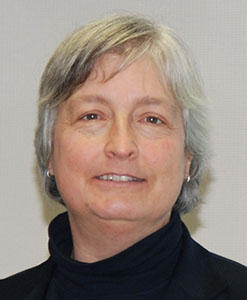 Catherine McCammon is a staff scientist at
Bayerisches Geoinstitut, University of Bayreuth.
Her research interests extend over the physics
and chemistry of minerals and their influence on
Earth properties and processes, but she is
probably best known for her enthusiasm as a Mössbauer spectroscopist.
Catherine McCammon is a staff scientist at
Bayerisches Geoinstitut, University of Bayreuth.
Her research interests extend over the physics
and chemistry of minerals and their influence on
Earth properties and processes, but she is
probably best known for her enthusiasm as a Mössbauer spectroscopist.

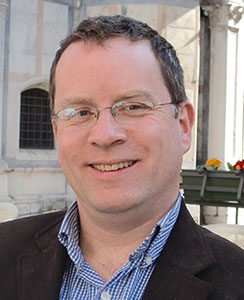 Malcolm is Professor of High Pressure Physics at the University of
Edinburgh, deputy-Director of the University's Centre for Science for
Extreme Conditions, and head of the Institute of
Condensed Matter and Complex Systems in the School of Physics &
Astronomy. He also holds a William Penney Fellowship with AWE
ALdermaston. Malcolm's research interests are in using x-ray diffraction
and scattering to investigate the behaviour of simple materials to
extreme pressures and temperature. He is a frequent user of synchrotron
light sources in the UK, Europe and the US, where he and his colleagues
have developed techniques to collect and analyse diffraction data from
both polycrystalline and single-crystal samples. Most recently, his
research interests have moved to the use of dynamic compression
techniques, utilising powerful laser sources and x-ray free electron
lasers to push structural studies of matter beyond the current limits of
static compression science. When not working in his office, lab or at
central facilities, Malcolm can be found on the golf course.
Malcolm is Professor of High Pressure Physics at the University of
Edinburgh, deputy-Director of the University's Centre for Science for
Extreme Conditions, and head of the Institute of
Condensed Matter and Complex Systems in the School of Physics &
Astronomy. He also holds a William Penney Fellowship with AWE
ALdermaston. Malcolm's research interests are in using x-ray diffraction
and scattering to investigate the behaviour of simple materials to
extreme pressures and temperature. He is a frequent user of synchrotron
light sources in the UK, Europe and the US, where he and his colleagues
have developed techniques to collect and analyse diffraction data from
both polycrystalline and single-crystal samples. Most recently, his
research interests have moved to the use of dynamic compression
techniques, utilising powerful laser sources and x-ray free electron
lasers to push structural studies of matter beyond the current limits of
static compression science. When not working in his office, lab or at
central facilities, Malcolm can be found on the golf course.

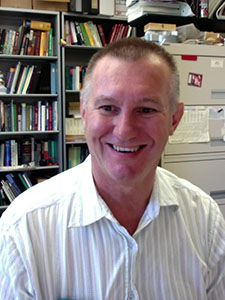 John Parise is a mineralogical crystallographer and Solid State
Chemistry with joint appointments at Stony Brook University (SBU) and
Brookhaven National Laboratory (BNL) on Long Island, New York. His
research interests include exploratory high-pressure materials
synthesis, aided by theoretical and in-situ x-ray and neutron
scattering. In 2012 he was appointed Director of the Joint Photon
Sciences Institute, an SBU-BNL initiative to promote education, training
and research at BNL's National Synchrotron Light Source-II.
John Parise is a mineralogical crystallographer and Solid State
Chemistry with joint appointments at Stony Brook University (SBU) and
Brookhaven National Laboratory (BNL) on Long Island, New York. His
research interests include exploratory high-pressure materials
synthesis, aided by theoretical and in-situ x-ray and neutron
scattering. In 2012 he was appointed Director of the Joint Photon
Sciences Institute, an SBU-BNL initiative to promote education, training
and research at BNL's National Synchrotron Light Source-II.

 Simon Parsons is Professor of Crystallography in the School of Chemistry and a member of The Centre for Science at Extreme Conditions at The University of Edinburgh.
Simon Parsons is Professor of Crystallography in the School of Chemistry and a member of The Centre for Science at Extreme Conditions at The University of Edinburgh.
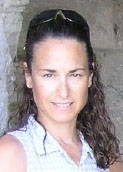 Sakura Pascarelli received a Laurea in Physics at the University La Sapienza (Rome, Italy) and a PhD degree in Physics at the University Joseph Fourier (Grenoble, France). She has been involved with synchrotron radiation instrumentation and research for the last 25 years. Her research today deals with studies on matter at extreme conditions of pressure, temperature and magnetic fields using principally X-ray Absorption Spectroscopy and X-ray Magnetic Linear and Circular Dichroism. She is presently Head of the Matter at Extremes Group within the Experiment Division of the ESRF and also scientist in charge of the x-ray absorption spectroscopy beamlines BM23 and ID24.
Sakura Pascarelli received a Laurea in Physics at the University La Sapienza (Rome, Italy) and a PhD degree in Physics at the University Joseph Fourier (Grenoble, France). She has been involved with synchrotron radiation instrumentation and research for the last 25 years. Her research today deals with studies on matter at extreme conditions of pressure, temperature and magnetic fields using principally X-ray Absorption Spectroscopy and X-ray Magnetic Linear and Circular Dichroism. She is presently Head of the Matter at Extremes Group within the Experiment Division of the ESRF and also scientist in charge of the x-ray absorption spectroscopy beamlines BM23 and ID24.

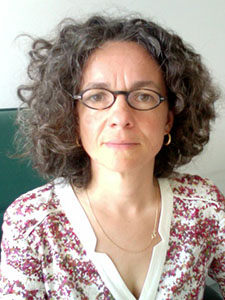 Short CV: PhD at the Ecole Normale Superieure de Lyon (France), Carnegie Fellow at the Geophysical Laboratory in Washington D.C. (USA), and currently Professor at the University Pierre and Marie Curie, Institute of Earth Sciences in Paris (ISTeP), and visiting professor at the University of Edinburgh (UK), School of Physics.
My interest in the properties of liquids at high pressure started during my PhD with the study of molten Fe and Fe-alloys in the perspective to better constrain the chemical composition of the Earth's core. Since then, the advancement in synchrotron x-ray-based techniques have allowed us to study lighter amorphous and molten materials, and simultaneously extend the P-range to the megabar. The range of properties that can be measured in situ using X-rays are the short-range order (local structure), the density, and the viscosity though in a restricted P-range for the latter.
In the course of the last 10 years, we have been studying liquid water, amorphous sulphur, and lately magmas at depth. Those are chemically much more complex materials, and other issues must be solved such as the local structure around elements present in minor amounts but potentially key to understanding some physical properties.
Short CV: PhD at the Ecole Normale Superieure de Lyon (France), Carnegie Fellow at the Geophysical Laboratory in Washington D.C. (USA), and currently Professor at the University Pierre and Marie Curie, Institute of Earth Sciences in Paris (ISTeP), and visiting professor at the University of Edinburgh (UK), School of Physics.
My interest in the properties of liquids at high pressure started during my PhD with the study of molten Fe and Fe-alloys in the perspective to better constrain the chemical composition of the Earth's core. Since then, the advancement in synchrotron x-ray-based techniques have allowed us to study lighter amorphous and molten materials, and simultaneously extend the P-range to the megabar. The range of properties that can be measured in situ using X-rays are the short-range order (local structure), the density, and the viscosity though in a restricted P-range for the latter.
In the course of the last 10 years, we have been studying liquid water, amorphous sulphur, and lately magmas at depth. Those are chemically much more complex materials, and other issues must be solved such as the local structure around elements present in minor amounts but potentially key to understanding some physical properties.